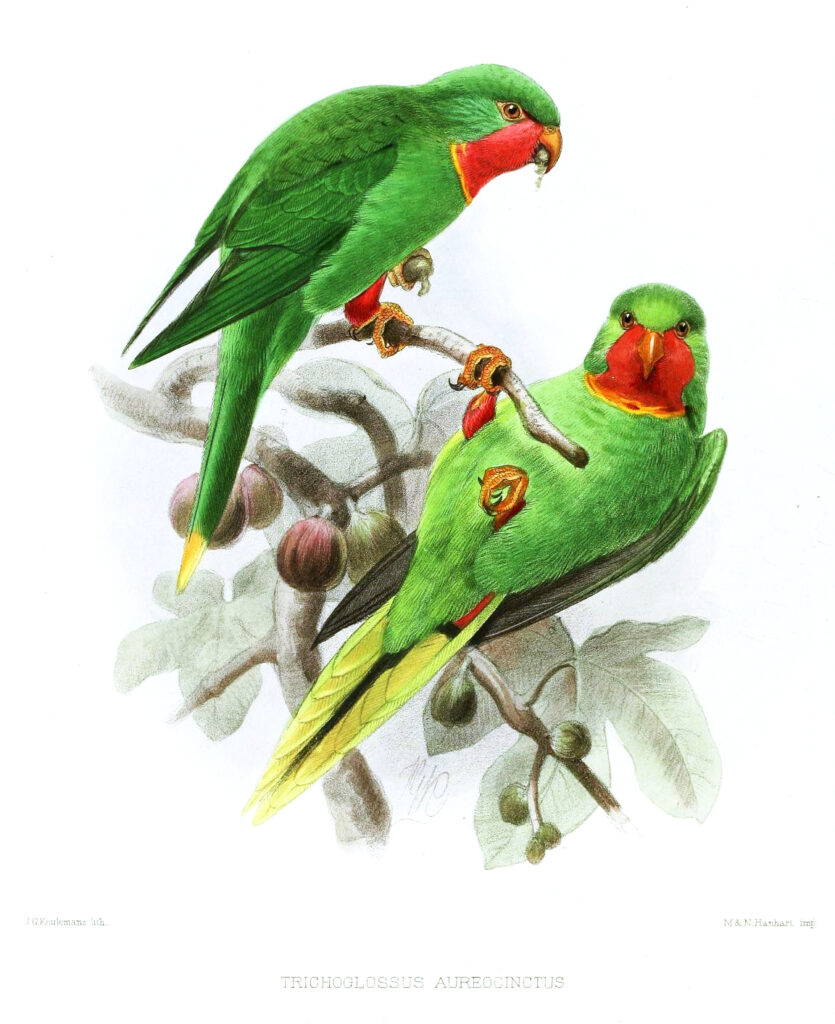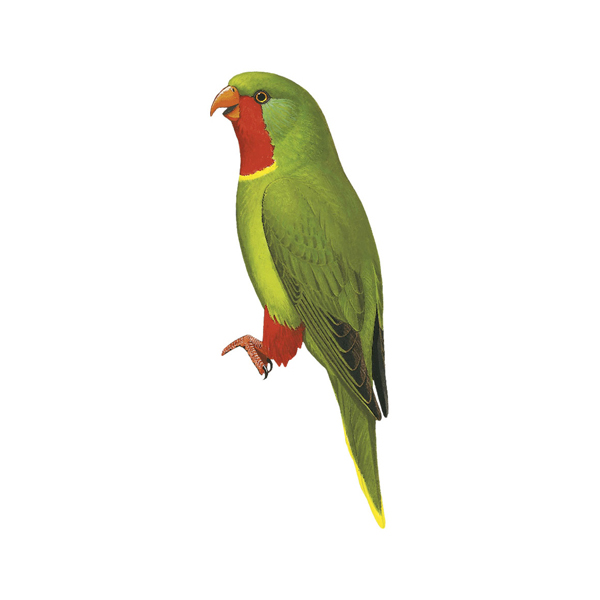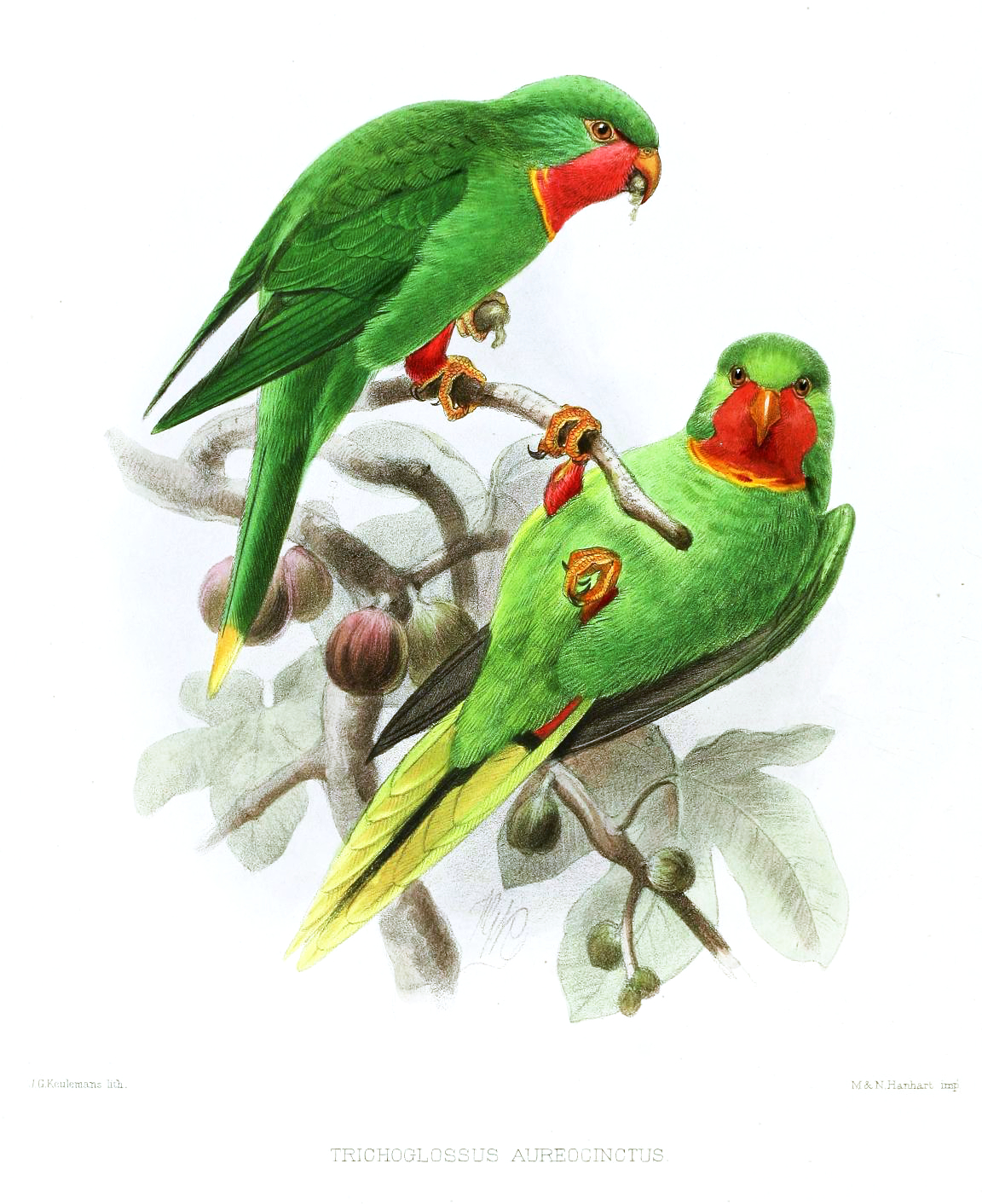
The Red-throated Lorikeet (Charmosyna amabilis) is a small, brightly colored parrot species that is critically endangered and possibly extinct. Here’s a detailed overview:
🦜 Red-throated Lorikeet Overview
- Scientific Name: Charmosyna amabilis
- Common Name: Red-throated Lorikeet
- Conservation Status: Critically Endangered (Possibly Extinct)
- Family: Psittaculidae
- Endemic to: Fiji
🌍 Habitat
- Historically found on the Fijian islands of Viti Levu, Vanua Levu, Taveuni, and Ovalau.
- Prefers montane and tropical moist forest environments.
🧬 Physical Characteristics
- Size: Around 18 cm (7 in) in length.
- Coloration:
- Bright green body.
- Distinctive red throat and face (hence the name).
- Blue on the crown and sides of the head.
- Tail is green with some red and yellow hues.
🦠 Diet
- Like other lorikeets, feeds on nectar, pollen, and fruits.
- Uses a specialized brush-tipped tongue to gather food from flowers.
⚠️ Conservation Concerns
- Last confirmed sighting: 1993
- Primary threats include:
- Habitat destruction due to logging and agriculture.
- Introduced predators like cats, rats, and mongooses.
- Surveys have repeatedly failed to find evidence of surviving individuals.
🔍 Current Status
- Classified by the IUCN Red List as Critically Endangered (Possibly Extinct).
- Conservation groups continue to hope for rediscovery, especially in remote forests of Viti Levu or Taveuni.
📸 Images and Rediscovery Efforts
There are no confirmed photographs of the species in the wild in recent decades. Some conservation organizations, including BirdLife International and NatureFiji-MareqetiViti, are still involved in efforts to search for any remaining populations.




Here are some of the most representative images of the critically endangered Red‑throated Lorikeet (Charmosyna/Vini amabilis), also known locally in Fiji as the Kulawai:
- The first two images depict the classic green plumage with striking red cheeks, throat, and thighs—traits that give the bird its name artistsforconservation.org+13en.wikipedia.org+13pina.com.fj+13.
- The third image shows a bird feeding on nectar among flowers, highlighting its brush‑tipped tongue adapted for nectar and pollen feeding datazone.birdlife.org.
- The fourth is an artistic interpretation inspired by vibrant floral surroundings, emphasizing its habitat association .
📸 About the Images
- No confirmed recent photos exist; all shown are historical records, illustrations, or artistic representations—nature photography is lacking due to the bird’s extreme rarity or possible extinction.
- The Flickr‑style artworks and vintage illustrations (e.g., by Keulemans) help showcase its unique plumage and structure inaturalist.org+13parrots.org+13parrots.org+13.
🔍 Why Are Photos So Rare?
- Last confirmed sighting: 1993 on Viti Levu (possibly one unconfirmed in 2001) mascotarios.org+12en.wikipedia.org+12naturefiji.org+12.
- Widespread surveys: Extensive searches—over 2,000 hours—between 2001 and 2012 yielded no confirmed observations pina.com.fj+2datazone.birdlife.org+2naturefiji.org+2.
- Elusive behavior: Prefers high canopy in remote upland forests, making visual detection challenging artistsforconservation.org+13parrots.org+13parrots.org+13.